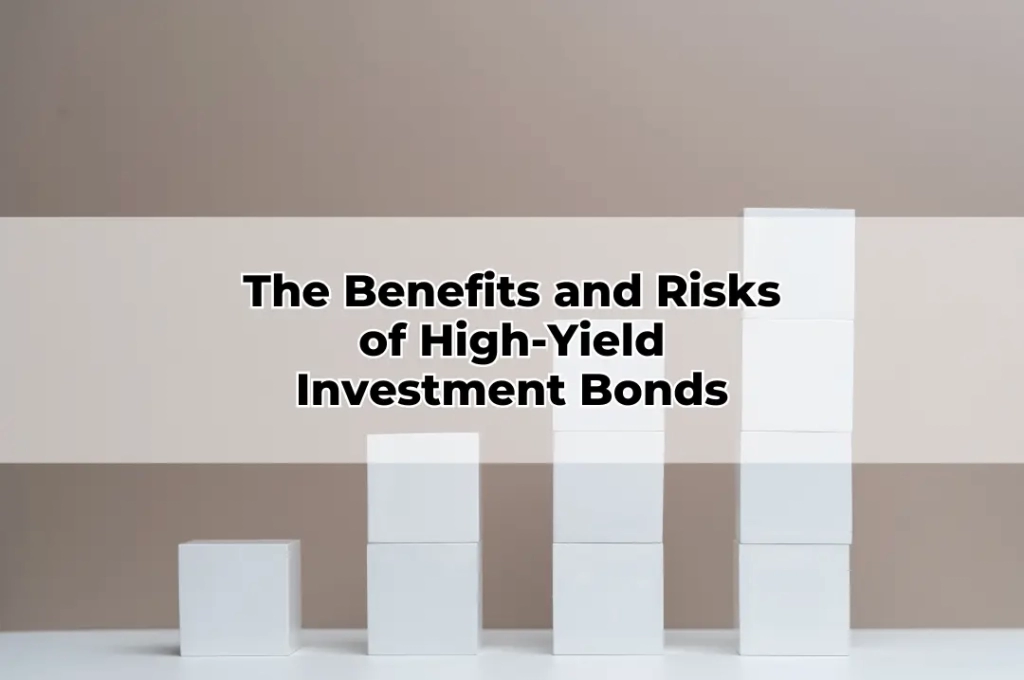The Benefits and Risks of High-Yield Investment Bonds
Table of Contents
ToggleHigh-yield investment bonds, often colloquially termed “junk bonds,” occupy a unique niche in the financial landscape. Offering returns significantly higher than government bonds or investment-grade corporate debt, they are attractive to investors pursuing elevated income streams. However, this promise of enhanced yields comes with a commensurate rise in risk. In the contemporary financial environment, understanding the nuanced interplay between reward and risk is critical. As a seasoned Toowoomba Financial Adviser, appreciating the intricacies of these instruments allows for tailored strategies that align with clients’ distinct risk appetites and financial objectives.
What Defines a High-Yield Bond?
High-yield bonds are issued by corporations or entities with lower credit ratings, typically below ‘BBB’ by Standard & Poor’s or ‘Baa3’ by Moody’s. These ratings imply a greater likelihood of default compared to their investment-grade counterparts. This elevated risk profile compels issuers to offer higher interest payments to attract investors. The allure lies in the spread between high-yield bonds and safer assets, which can significantly boost portfolio returns when managed astutely. For clients seeking diversification beyond traditional equities and low-risk debt, these bonds offer an avenue for enhanced income, albeit with caution warranted.
Potential Benefits of High-Yield Bonds
The foremost advantage of high-yield bonds is their elevated income potential. In a low-interest-rate environment, these instruments provide an attractive alternative to term deposits and government bonds. Additionally, high-yield bonds exhibit lower sensitivity to interest rate movements compared to longer-duration government securities, rendering them a partial hedge against rising rates. Strategic allocation to high-yield bonds can also inject portfolio diversification, as their performance does not always directly correlate with equity markets. For individuals approaching retirement, measured exposure to high-yield bonds can complement a broader income-focused strategy, enriching the depth of their retirement financial advice plans.
The Risks Inherent in High-Yield Bonds
While the lure of robust yields is undeniable, it is imperative to scrutinise the risks embedded within high-yield bonds. The primary peril is default risk—the possibility that the issuer will fail to meet its payment obligations. Economic downturns, sector-specific headwinds, or management missteps can exacerbate these vulnerabilities. Furthermore, high-yield bonds are subject to liquidity risk; in volatile markets, selling these bonds without impacting their price significantly can be challenging. Price volatility in high-yield markets can surpass that of government bonds, necessitating robust risk management protocols within any comprehensive financial planning Toowoomba strategy.
Market Dynamics Influencing High-Yield Bonds
High-yield bond prices are influenced by a medley of factors, including economic growth rates, corporate earnings trends, interest rate fluctuations, and investor sentiment. In buoyant economic conditions, default rates typically decline, bolstering bond valuations. Conversely, in recessions or periods of financial stress, default rates can spike, leading to pronounced declines in bond prices. A discerning Online Financial Adviser continuously monitors these macroeconomic indicators, enabling strategic adjustments to client portfolios to safeguard against undue exposures.
Comparing High-Yield Bonds to Other Income Investments
In the continuum of income-generating investments, high-yield bonds sit between equities with dividend focus and traditional investment-grade bonds. While dividend-paying equities offer the potential for capital appreciation alongside income, they come with equity market risks. Investment-grade bonds provide greater capital preservation but at much lower yields. High-yield bonds bridge this gap, offering elevated income with intermediate risk. However, their hybrid nature necessitates careful allocation within a diversified portfolio. Clients seeking retirement financial advice often benefit from integrating a modest exposure to high-yield bonds to bolster income without excessive equity market dependence.
The Role of Credit Ratings in Evaluating High-Yield Bonds
Credit ratings serve as a preliminary filter when assessing high-yield bonds. Agencies such as Moody’s, Standard & Poor’s, and Fitch rigorously analyse issuers’ financial health, assigning ratings that reflect default probabilities. However, reliance solely on credit ratings can be perilous. Market perceptions often evolve faster than ratings agencies update their assessments. Therefore, comprehensive due diligence encompassing qualitative and quantitative analysis is indispensable. A seasoned Toowoomba Financial Adviser scrutinises not just the rating, but also industry dynamics, issuer-specific news, and macroeconomic indicators to gauge true creditworthiness.
Diversification Strategies for High-Yield Bond Portfolios
Concentration risk in high-yield bond portfolios can lead to catastrophic outcomes. Effective diversification strategies mitigate this. Allocating across industries, geographies, and varying credit qualities reduces the impact of isolated defaults. Incorporating high-yield bond funds or ETFs can also enhance diversification for retail investors, granting exposure to hundreds of issuers without excessive transaction costs. A robust Financial Planning Toowoomba framework ensures that diversification principles are meticulously applied, thus safeguarding client portfolios against idiosyncratic risks endemic to the high-yield sector.
Tax Implications of High-Yield Bond Investments
In Australia, interest income from high-yield bonds is typically taxed at the investor’s marginal rate, which can significantly diminish net returns for those in higher tax brackets. Capital gains or losses also arise upon the sale of these securities, subject to capital gains tax (CGT) provisions. Strategic tax planning, such as utilising tax-advantaged structures like SMSFs (Self-Managed Superannuation Funds), can mitigate some of this burden. Tailored retirement financial advice often incorporates tax-efficiency strategies when recommending high-yield investments, ensuring that after-tax returns align with clients’ financial goals.
Managing Volatility in High-Yield Bond Markets
Volatility management is crucial when navigating high-yield bond investments. Employing duration management—adjusting the average maturity of bonds—can mitigate interest rate sensitivity. Additionally, active credit selection focuses on identifying issuers with resilient business models, strong cash flows, and sustainable debt levels. Tactical asset allocation, shifting exposure based on evolving economic conditions, further buttresses portfolios against abrupt market shocks. An adept Online Financial Adviser will embed these techniques into client investment strategies, ensuring resilience across market cycles.
High-Yield Bonds in Retirement Portfolios
Integrating high-yield bonds into retirement portfolios requires a deft touch. The pursuit of income must not compromise capital preservation, a paramount objective for retirees. Accordingly, high-yield exposure should be proportionate, nested within a broader fixed income strategy that includes government and investment-grade bonds. Laddering maturities—staggering bond maturities over time—can smooth income streams and reinvestment risks. Retirement financial advice must weigh the liquidity needs, income requirements, and risk tolerance of each retiree before recommending high-yield allocations.
Selecting the Right High-Yield Bond Funds
For many investors, direct investment in individual high-yield bonds is impractical due to minimum purchase requirements and due diligence demands. High-yield bond funds or exchange-traded funds (ETFs) offer a viable alternative, providing instant diversification and professional management. However, fund selection should be meticulous. Key evaluation criteria include management track record, fee structures, credit quality of holdings, and historical volatility. Partnering with a Toowoomba Financial Adviser ensures that fund choices align with the broader Financial Planning Toowoomba strategy, enhancing portfolio cohesion and resilience.
Conclusion
High-yield bonds present a compelling proposition for investors seeking to augment their income profiles. However, their elevated risk characteristics demand careful consideration, ongoing monitoring, and strategic integration within diversified portfolios. With the guidance of an experienced Online Financial Adviser, clients can navigate the high-yield bond landscape with confidence, balancing opportunity and risk to achieve their financial aspirations. Whether augmenting retirement income streams or enhancing overall portfolio returns, high-yield bonds, when judiciously utilised, can be a potent tool in the arsenal of astute financial planning.









